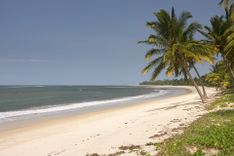6. Take to the lakes
Each of Tanzania’s great lakes – Lake Victoria, Lake Tanganyika , and Lake Nyasa – has ferry services that afford another perspective on Tanzania. These journeys are often convenient, and invariably unforgettable.
Lake Victoria
The most relaxing and enjoyable way to travel between Bukoba and Mwanza on is on the MV Victoria. This was built in Scotland in 1959–60, and reassembled on Lake Victoria in 1961.
As it sails at night in either direction, you won’t see much more than the bobbing lights of fishermen, but the daybreaks and sunsets never fail to stir the soul.
Lake Tanganyika
The MV Liemba, has been ferrying passengers and cargo up and down Lake Tanganyika for over eighty years.
You won’t forget the gorgeous sunsets, or the frenetic activity that erupts in port villages when the ferry arrives. At most ports, it drops anchor offshore, and passengers, luggage and cargo are carried to and from it in small lighters.
Lake Nyasa
A ride on Lake Nyasa is one of Tanzania’s great journeys. Located in the south-west of Tanzania, it extends into Malawi and Mozambique. As a result, it’s also known as Lake Malawi and Lago Niassa.
The most southerly lake in the East African Rift system, Lake Nyasa is beautiful, and astonishingly biodiverse. It’s home to around 30% of the world’s species of cichlid fish (you’ll see them darting through the clear water), plus plenty of hippos, crocodiles and birds.
How to get to Tanzania's great lakes
- Lake Victoria: Mwanza and Bukoba are the main access points, both reachable by domestic flight or long-distance bus.
- Lake Tanganyika: Fly to Kigoma, or take a train or bus from Dar es Salaam, then board the MV Liemba.
- Lake Nyasa: Mbamba Bay and Itungi Port are entry points. Getting here usually involves a combination of flights and long-distance road travel.
When to visit Tanzania's Great Lakes
- June to October is best for clear skies, calm waters and cooler travel conditions.
- November to March is hotter and more humid, with occasional rain – but also great for birdwatching and lake biodiversity.
- April and May bring heavier rains that can disrupt ferry schedules.




















